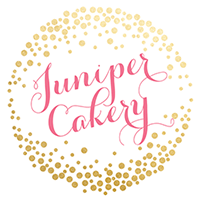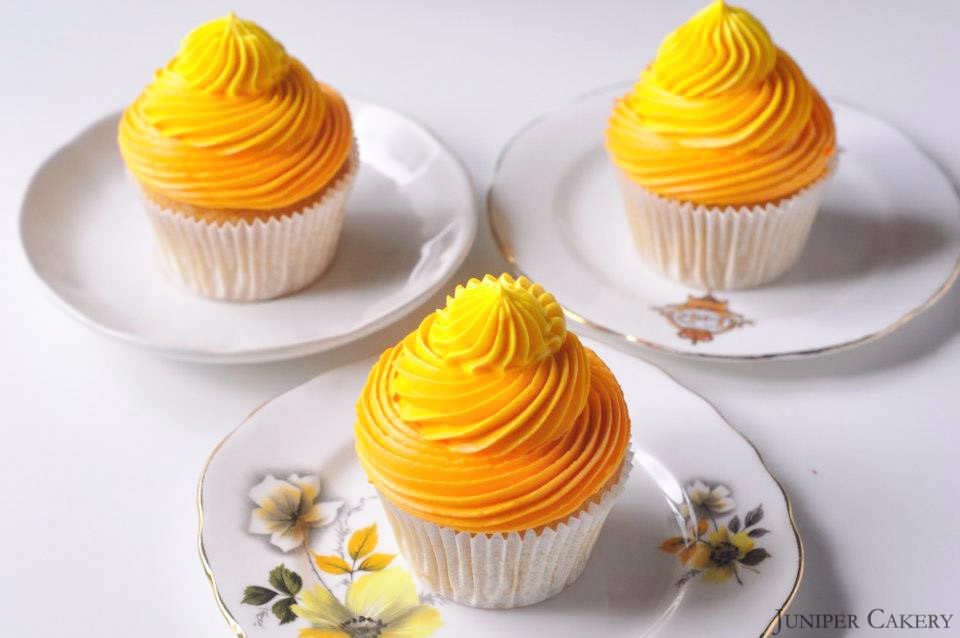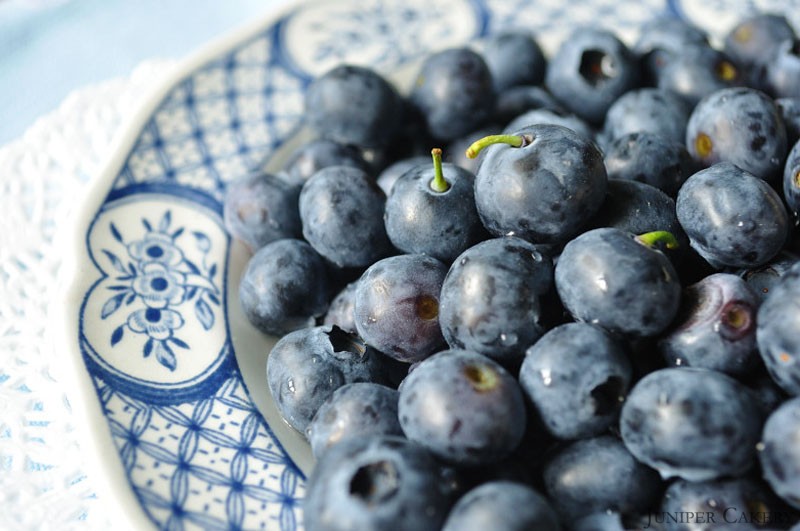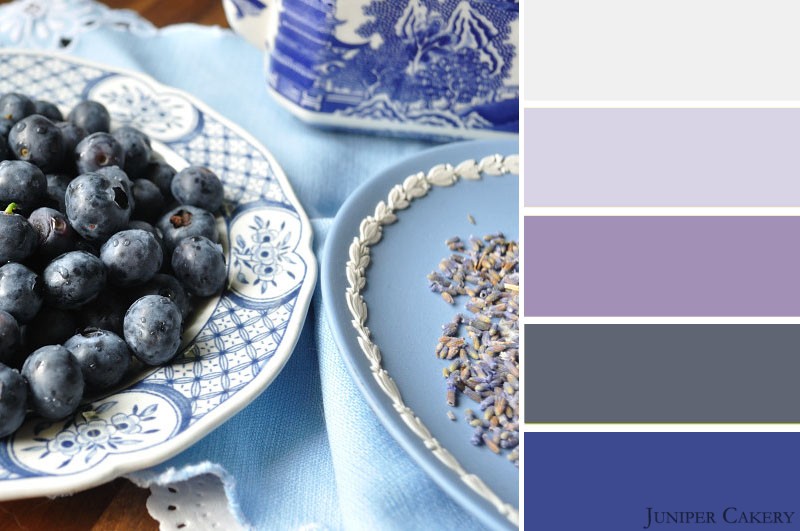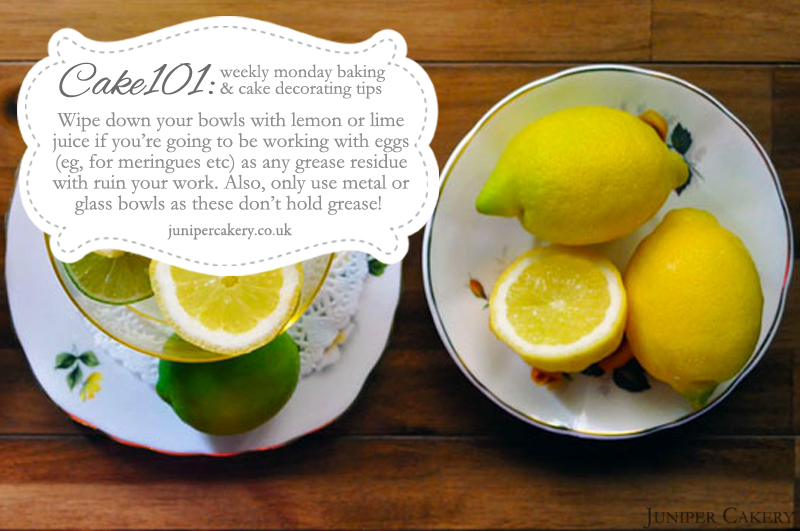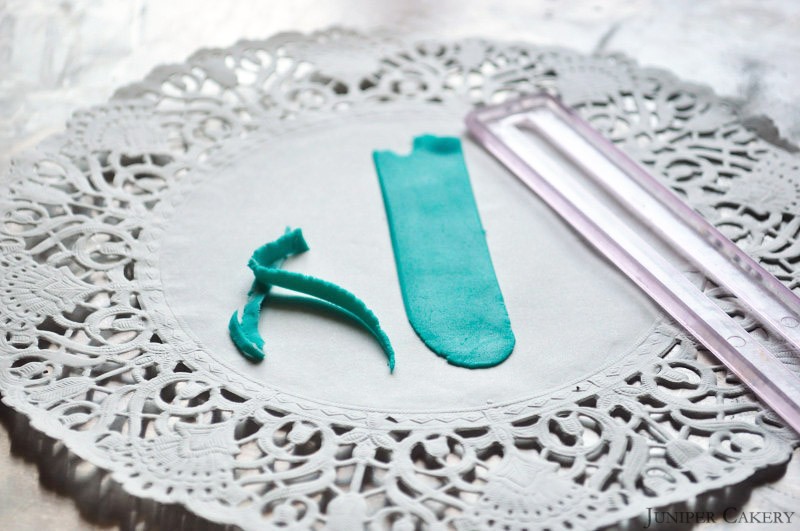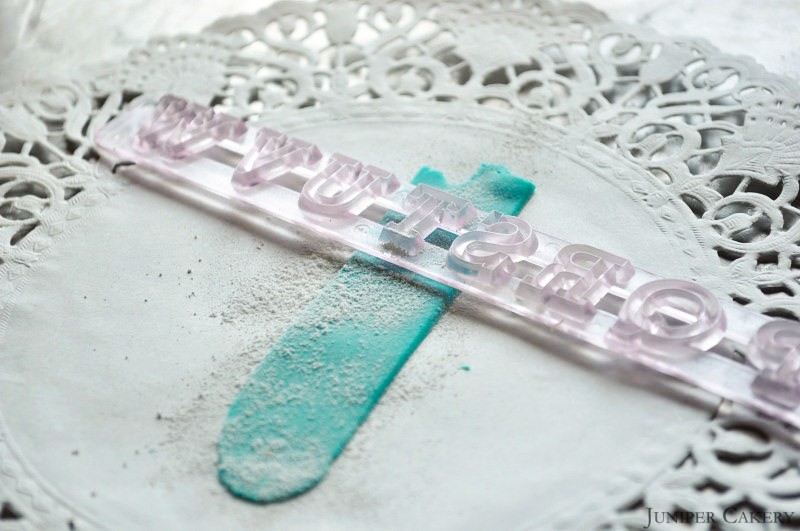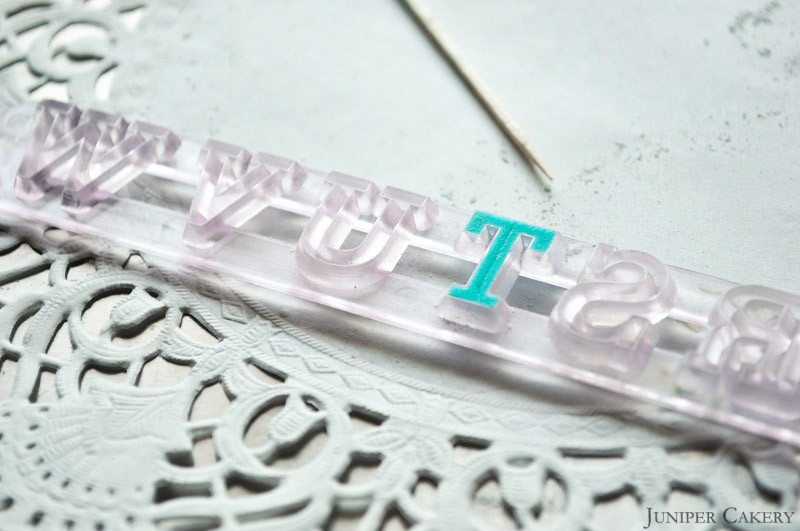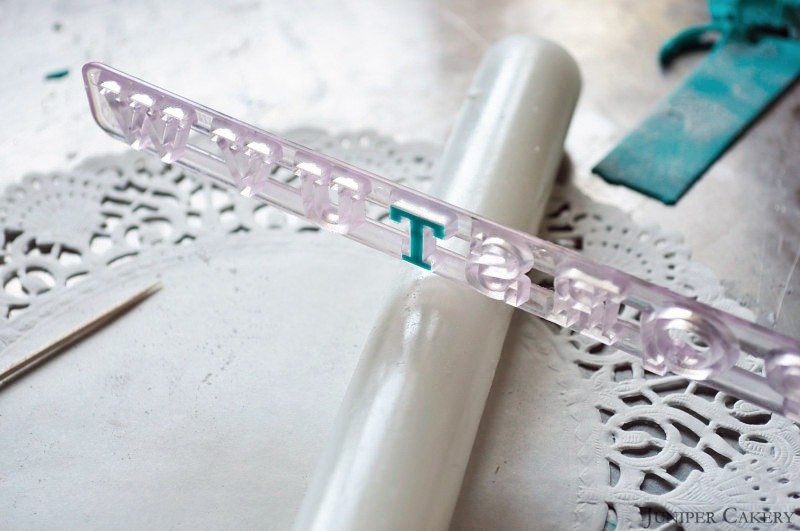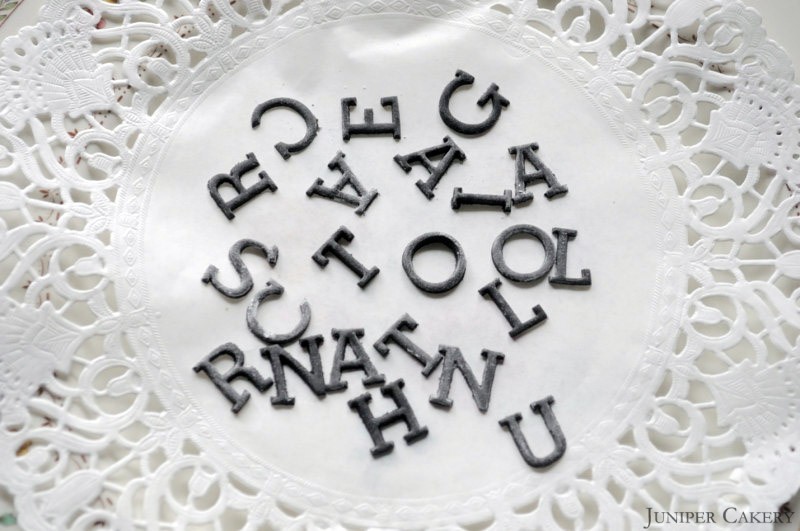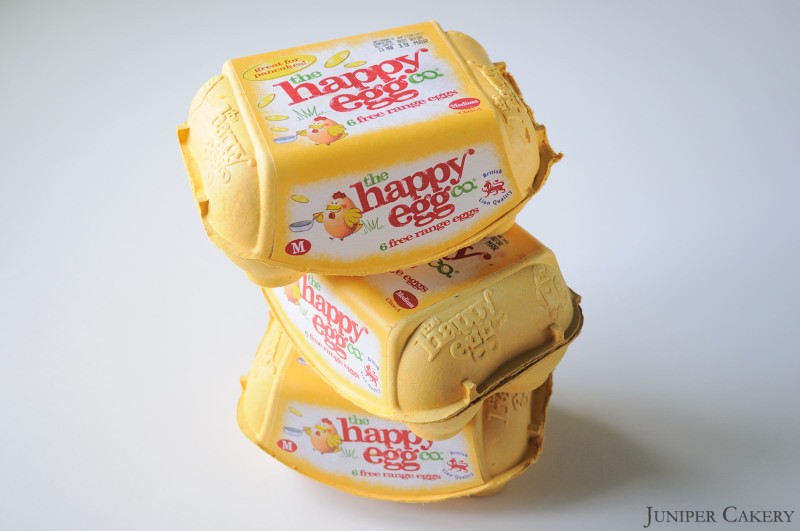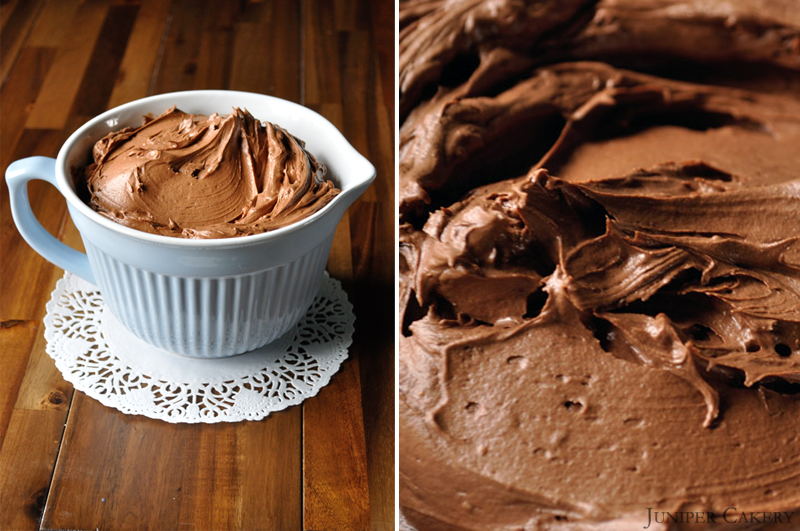This week’s cake and cupcake decorating tutorial shows you how to create a beautiful and softly ruffled Anemone! We’ve been seeing Anemone flowers pretty much everywhere over the past couple of months. They’ve been found nestled into bouquets, fabric prints, photography and wedding decor They’re striking and unique on top of cakes and make cupcakes look instantly grown up and sophisticated too!
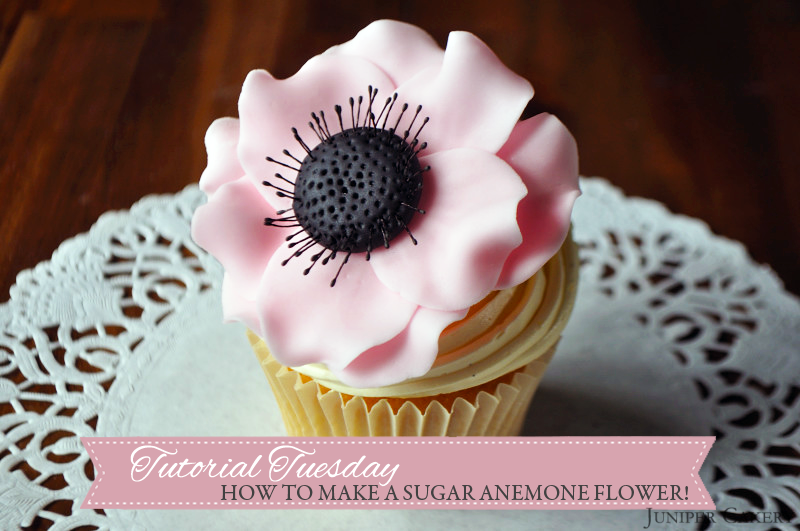
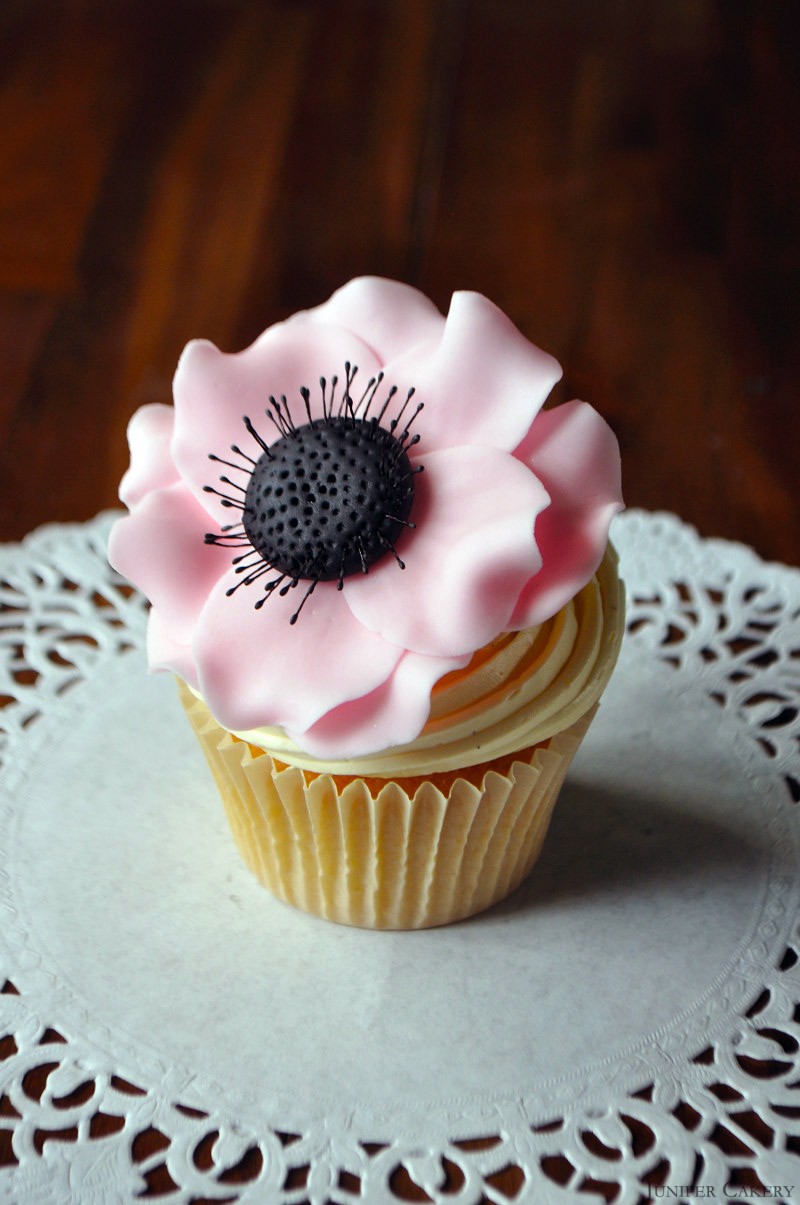
You will need…
Black sugarpaste
Pink sugarpaste (or any colour you like)
Tylo Powder (mix a little in your sugarpaste to help harden)
Quilting modelling tool
Ball modelling tool
Fondant rolling pin
Rose petal cutters
Flower Foam Pad
Black stamens or light colour stamens painted with black food dye
Edible glue
Paint brush
Flower forming cup
Foil
Icing sugar
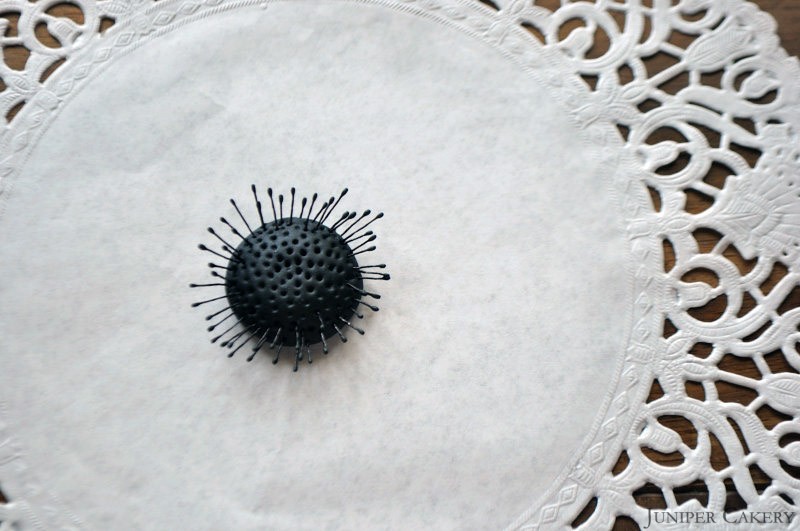
Step one: Create a ball about the size of a 10 pence coin (or 25 cents in the U.S) with your black sugarpaste. Flatten this slightly and smooth the surface.
Step two: Take your quilting tool and indent lots of ‘dots’ into the surface.
Step three: Cut down your stamens and insert these around the outer edge of the centre of your flower.
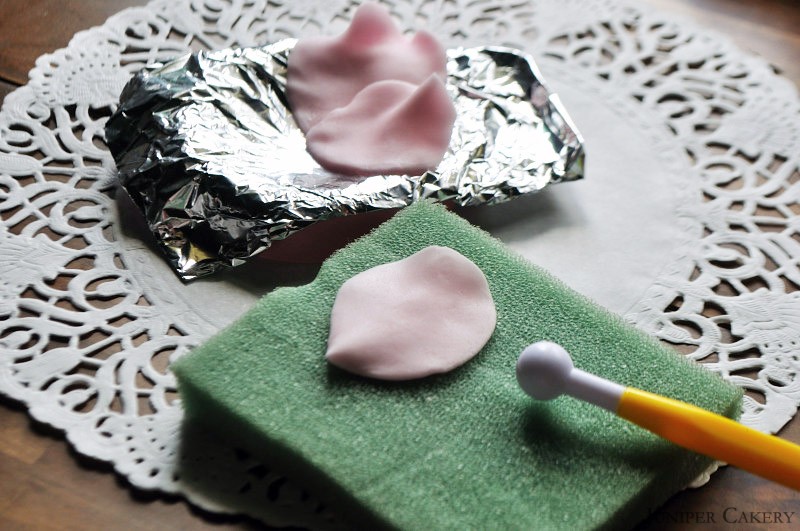
Step four: Cover your flower forming cup with foil and dust lightly with icing sugar so your petals won’t stick to the foil.
Step five: Add Tylo powder to the sugarpaste you’re using for the petals.
Step six: To make your petals roll out your sugarpaste thin and cut with your largest rose petals cutters.
Step seven: Now you need to ruffle the edges of your petals. To do this you need to lightly ‘massage’ the edges of your petals with your ball tool atop of a flower foam pad. Tweak the edge ever so slightly with your fingers.
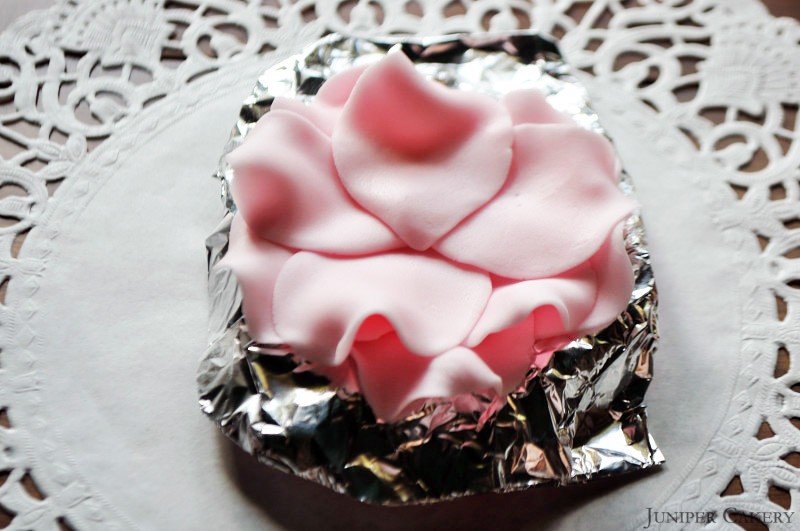
Step eight: We created 10 individual petals to create this Anemone. Nestle the first five petals into your forming cup and slightly atop each other with edible glue fixing them together. Lay the next layer of 5 petals where the petals of the first layer overlap.
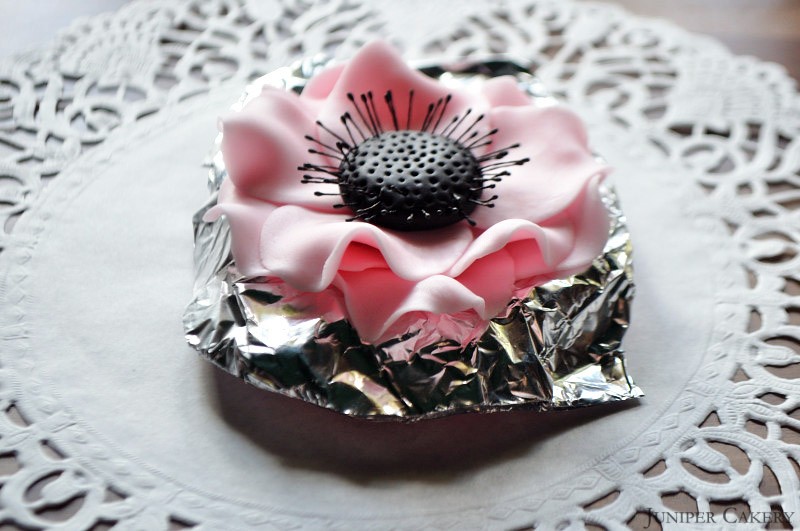
Step nine: Add some edible glue to the centre of your petals and attach the stamen studded centre you made earlier.
You should now be left with a gorgeous and elegantly ruffled Anemone flower; perfect for cakes and cupcakes!

